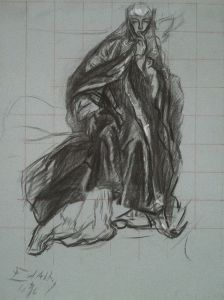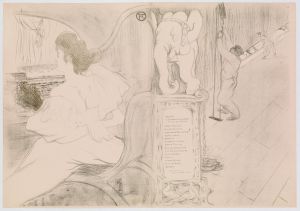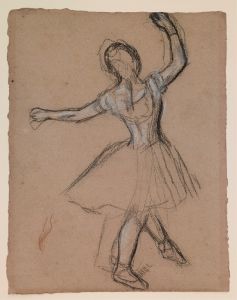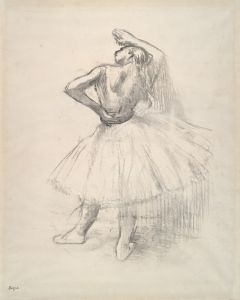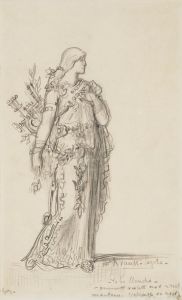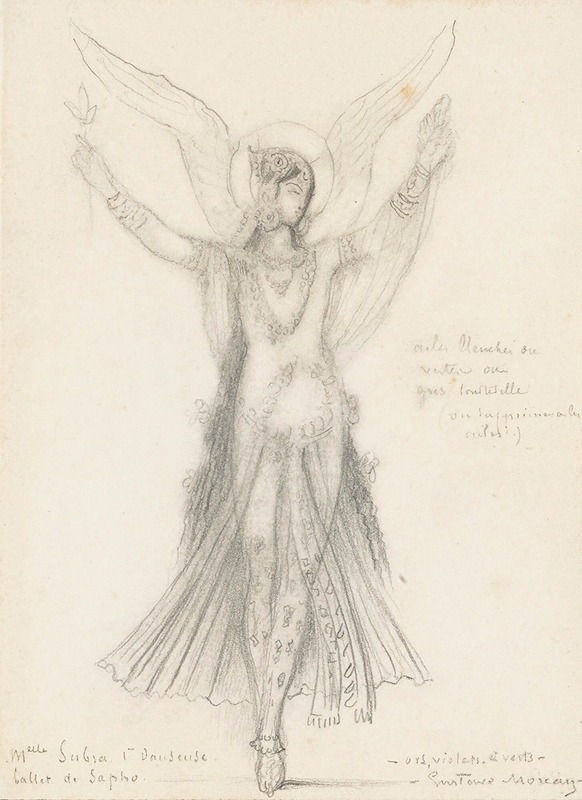
Première Danseuse. Mademoiselle Subra. Ballet De Sapho
A hand-painted replica of Gustave Moreau’s masterpiece Première Danseuse. Mademoiselle Subra. Ballet De Sapho, meticulously crafted by professional artists to capture the true essence of the original. Each piece is created with museum-quality canvas and rare mineral pigments, carefully painted by experienced artists with delicate brushstrokes and rich, layered colors to perfectly recreate the texture of the original artwork. Unlike machine-printed reproductions, this hand-painted version brings the painting to life, infused with the artist’s emotions and skill in every stroke. Whether for personal collection or home decoration, it instantly elevates the artistic atmosphere of any space.
Gustave Moreau was a prominent French Symbolist painter known for his intricate and imaginative works that often drew on mythological and biblical themes. One of his lesser-known works is "Première Danseuse. Mademoiselle Subra. Ballet De Sapho," which reflects Moreau's fascination with the performing arts and his ability to capture the grace and elegance of ballet.
This painting features Mademoiselle Subra, a dancer associated with the Ballet de Sapho. The Ballet de Sapho was a production that likely drew inspiration from the ancient Greek poet Sappho, known for her lyric poetry and association with themes of love and passion. Moreau's depiction of Mademoiselle Subra in this context highlights his interest in classical themes and his ability to blend them with contemporary subjects.
Moreau's style is characterized by his use of rich colors, detailed ornamentation, and a dreamlike quality that invites viewers into a world of fantasy and beauty. In "Première Danseuse. Mademoiselle Subra. Ballet De Sapho," these elements are evident in the way he captures the dancer's poise and the flowing movement of her costume. The painting likely emphasizes the ethereal quality of the dance, a common theme in Moreau's work, which often sought to transcend the mundane and explore the spiritual and the sublime.
The painting is a testament to Moreau's skill in rendering the human form and his ability to convey emotion and narrative through visual art. His work often features a high level of detail, and this piece is no exception, with careful attention paid to the textures and patterns of the dancer's attire and the subtle play of light and shadow.
Moreau's interest in dance and performance is part of a broader trend in 19th-century art, where many artists sought to capture the dynamism and expressiveness of the performing arts. Ballet, in particular, was a popular subject, as it embodied ideals of beauty, grace, and the transcendence of physical limitations. Moreau's painting fits within this context, offering a glimpse into the cultural milieu of his time and the ways in which artists engaged with contemporary themes.
While "Première Danseuse. Mademoiselle Subra. Ballet De Sapho" may not be as widely recognized as some of Moreau's other works, it remains an important piece within his oeuvre, illustrating his versatility and his ability to draw on a wide range of influences. Moreau's legacy as a Symbolist painter is marked by his unique vision and his contribution to the development of modern art, and this painting is a reflection of his enduring fascination with the interplay between myth, art, and the human experience.






